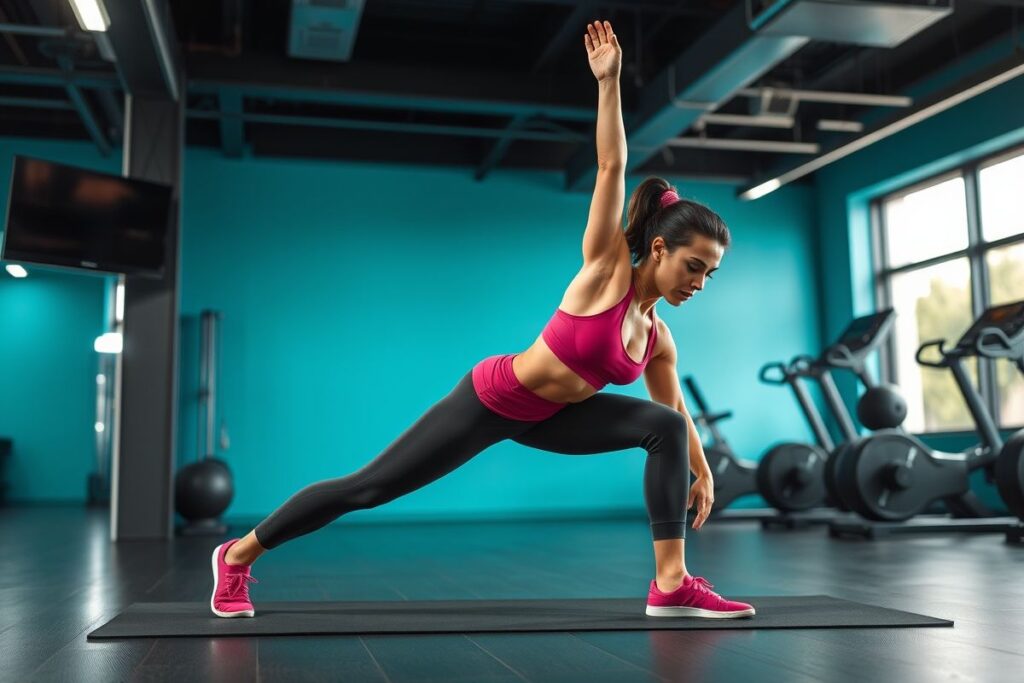Best Gyms for Virtual Flexibility Classes – 7 Clues

In today’s fast-paced world, finding time for a traditional gym can be challenging. Luckily, virtual flexibility classes have emerged as a convenient and effective way to improve your mobility and overall well-being from the comfort of your home. But with so many options available, how do you choose the best virtual gym for your needs? This article provides seven key clues to help you navigate the world of online flexibility training and find the perfect fit for your fitness journey. From examining instructor credentials to exploring class variety and technological requirements, we’ll cover everything you need to consider when selecting a virtual gym that empowers you to reach your flexibility goals.
Instructor Expertise and Credentials
Experience and Qualifications
When choosing a virtual flexibility class, the instructor’s expertise is paramount. Look for instructors with certifications in relevant fields like yoga, Pilates, or dance. Experience teaching flexibility-focused classes is also essential, as it indicates a deeper understanding of safe and effective stretching techniques.
Beyond certifications, consider the instructor’s background and approach to flexibility training. Some instructors may specialize in specific modalities like dynamic stretching or PNF (proprioceptive neuromuscular facilitation), which can be beneficial if you have particular needs or goals. Reading instructor bios and testimonials can offer valuable insights into their teaching style and philosophy.
Investigating the instructor’s experience and qualifications can significantly impact the quality of your virtual flexibility training. A knowledgeable instructor can guide you through proper form, modifications, and progressions, ensuring a safe and effective workout while minimizing the risk of injury.
Teaching Style and Communication
Just as important as credentials is the instructor’s teaching style. A clear and concise communication style is crucial in a virtual setting, where visual cues might be limited. Look for instructors who can articulate instructions effectively and offer modifications for different levels of flexibility.
Consider whether you prefer a more structured or free-flowing approach to flexibility training. Some instructors follow a set sequence of poses or exercises, while others offer a more improvisational approach. Finding an instructor whose teaching style resonates with your preferences can enhance your enjoyment and motivation.
The instructor’s ability to create a supportive and encouraging online environment is also important. Look for instructors who foster a sense of community and offer personalized feedback to help you progress on your flexibility journey.
Reviews and Testimonials
Before committing to a virtual gym, take the time to read reviews and testimonials from other users. This can provide valuable insights into the instructor’s effectiveness, the quality of the classes, and the overall user experience.
Pay attention to comments about the instructor’s communication style, the clarity of instructions, and the level of support provided. Positive reviews can be a strong indicator of a high-quality virtual flexibility program.
Reading reviews can also alert you to any potential drawbacks or issues with the platform or the instructor’s approach. This information can help you make an informed decision and choose a virtual gym that meets your specific needs and preferences.
Class Variety and Structure
Different Flexibility Modalities Offered
Class Length and Scheduling Options
Level Progression and Customization
Platform and Technology
User-Friendly Interface and Navigation
Video and Audio Quality
Device Compatibility and Accessibility
Pricing and Membership Options
Different Subscription Tiers
Free Trial or Introductory Offers
Value for Money and Features Included
Community and Support
Interactive Features and Communication Channels
Opportunities for Feedback and Interaction
Sense of Community and Belonging
Convenience and Accessibility
On-Demand vs. Live Classes
Flexibility of Scheduling and Location
Accessibility for Different Fitness Levels
Goal Setting and Progress Tracking
Tools and Resources for Tracking Progress
Personalized Goals and Feedback
Motivation and Accountability
Conclusion
Choosing the best virtual gym for flexibility classes requires careful consideration of several factors. By using these seven clues as a guide, you can find a program that aligns with your goals, preferences, and lifestyle. Remember to prioritize instructor expertise, class variety, platform usability, and community support to ensure a rewarding and effective flexibility training experience.
